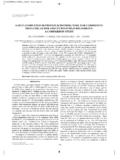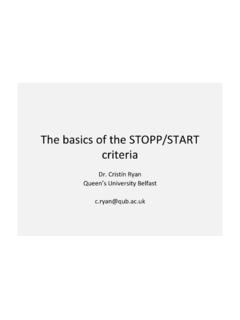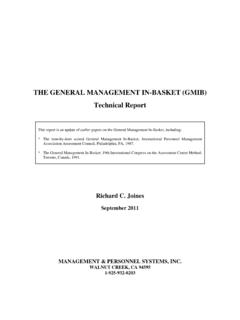Transcription of WHAT IS A J CLUB - American Journal of Critical Care
1 what IS A Journal club ? With its September 2002 issue, the American Journal of Critical Care debuts a new feature, the AJCC Journal club . Each issue of the Journal will now feature an AJCC. Journal club article that provides questions and discussion points to stimulate a Journal club discussion in which participants can evaluate new research and its applicability to clinical nursing practice. We encourage Critical care nurses to use the AJCC Journal club to assist them in critically analyzing research to promote a better understanding of the research process and to advocate evidence-based nursing practice.
2 The general purpose of a Journal club is to facilitate the review of a specific research study and to discuss implications of the study for clinical practice. A Journal club has been defined as an educational meeting in which a group of individuals discuss current articles, providing a forum for a collective effort to keep up with the ,2 There are many advantages of participating in a Journal club , including keeping abreast of new knowledge, promoting awareness of current nursing research findings, learning to critique and appraise research, becoming familiar with the best current clinical research, and encouraging research ,4.
3 How to Begin The steps to beginning a Journal club at your school, hospital, or medical institution are simple: 1. Post and distribute copies of the research article and the Journal club discussion questions to interested persons 2. Set up a convenient meeting time and location (eg, monthly). 3. Identify a facilitator for the meeting (initially, this could be a clinical educator, clinical nurse specialist, nurse practitioner, nurse manager, or senior staff member, with Journal club members then taking turns to lead subsequent Journal club sessions).
4 4. Hold the Journal club (encourage active participation of those attending by using the discussion questions). 5. Evaluate the Journal club (eg, at the end of the session, gather feedback from participants). Determine how the next Journal club meeting could be made more beneficial, eg, encourage more attendance, hold more than one session, tape-record the session for those unable to attend.). 6. Schedule the next meeting, using the AJCC Journal club feature article Several factors are key in promoting a successful Journal club , including promoting interest, attendance, and involvement.
5 Having a session leader to start and facilitate discus- sion can help to ensure that the Journal club meetings are productive. Scheduling the Journal club at a time and location that are convenient for staff to attend is additionally important. The value of a Journal club is that it can promote a better understanding of the research process and an improved ability to critically appraise research. Reading and critiquing research is most beneficial for Critical care nurses, as it facilitates the evaluation of research for use in clinical practice.
6 REFERENCES. 1. Dwarakanath LS, Khan KS. Modernizing the Journal club . Hosp Med. 2000;16:425-427. 2. Sidorov J. How are internal medicine residency Journal clubs organized, and what makes them successful? Arch Intern Med. 1995;155:1193-1197. 3. Shearer J. The Nursing Research Journal club : an ongoing program to promote nursing research in a community hos- pital. J Nurs Staff Dev. 1995;11:104-105. 4. Kirchhoff KT, Beck SL. Using the Journal club as a component of the research utilization process. Heart Lung. 1995;24:246-250.
7 GUIDELINES FOR CRITIQUING RESEARCH. The overall goal of a research critique is to formulate a general evaluation of the merits of a study and to evaluate its applicability to clinical practice. A research critique goes beyond a review or summary of a study and carefully appraises a study's strengths and limitations. The critique should reflect an objective assessment of a study's validity and significance. A research study can be evaluated by its component parts, and a thorough research critique examines all aspects of a research study.
8 Some common questions used to guide a research critique include: A. Description of the Study what was the purpose of the research? Does the problem have significance to nursing? Why is the problem significant/important? Identify the research questions, objectives, or hypothesis(es). B. Literature Evaluation Does the literature review seem thorough? Does the review include recent literature? Does the content of the review relate directly to the research problem? Evaluate the research cited in the literature review and the argument developed to support the need for this study.
9 C. Conceptual Framework Does the research report use a theoretical or conceptual model for the study? Does the model guide the research and seem appropriate? How did it contribute to the design and execution of the study? Are the findings linked back to the model or framework? D. Sample Who were the subjects? what were the inclusion criteria for participation in the study? How were subjects recruited? Are the size and key characteristics of the sample described? How representative is the sample? E. Methods and Design Describe the study methods How were the data collected?
10 Are the data collection instruments clearly described? Were the instruments appropriate measures of the variables under study? Describe and evaluate the reliability of the instruments. (Reliability refers to the consistency of the measures.) Will the same results be found with subsequent testing? Describe and evaluate the validity of the instruments. (Validity refers to the ability of the instrument to measure what it proposes to measure.). F. Analysis How were the data analyzed? Do the selected statistical tests appear appropriate?







